Jedsada Srijunpoe
Installing Linux for the first time of my life
Hi! In this blog, I will show you how I installed Linux for the first time of my life :D
- 1. Install WSL
- 2. Install ubuntu 22.04
- 3. Try using Basic WSL2 Commands
- 4. Try using Basic Ubuntu Commands
- 5. Run Linux GUI apps on the Windows Subsystem for Linux
1. Install WSL
I followed Install Linux on Windows with WSL documentation to install Linux on Windows with WSL
First, I opened Windows Command Prompt with administrator and run this command
wsl --install
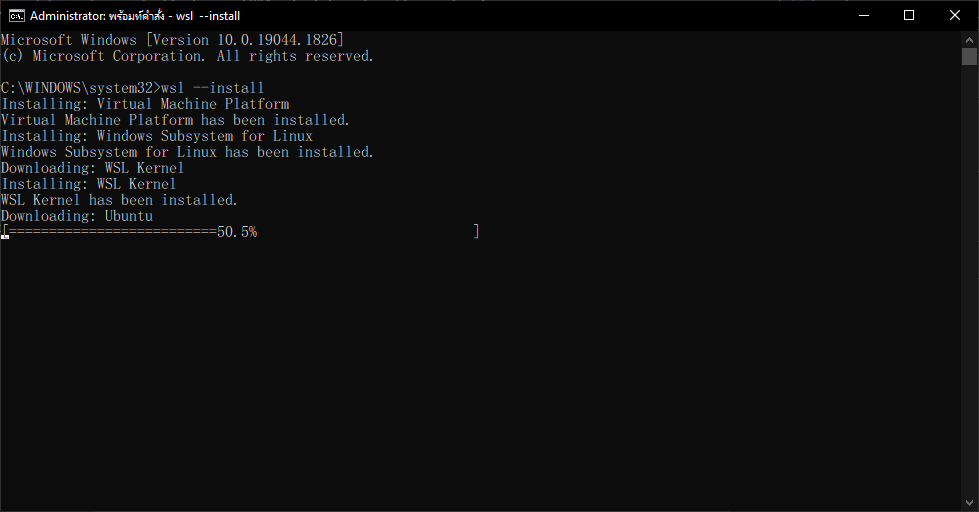
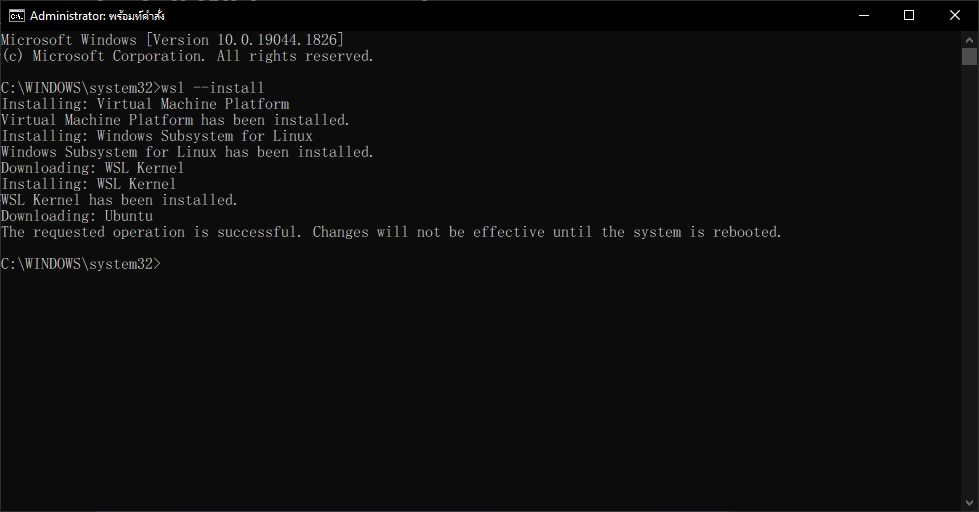
This command will download the latest Linux kernel, set WSL 2 as your default, and install a Linux distribution for you (Ubuntu by default) and then I restarted my PC
2. Install ubuntu 22.04
I searched “Ubuntu” in Microsoft Store and downloaded Ubuntu 22.04 LTS because it has 5 stars review :D
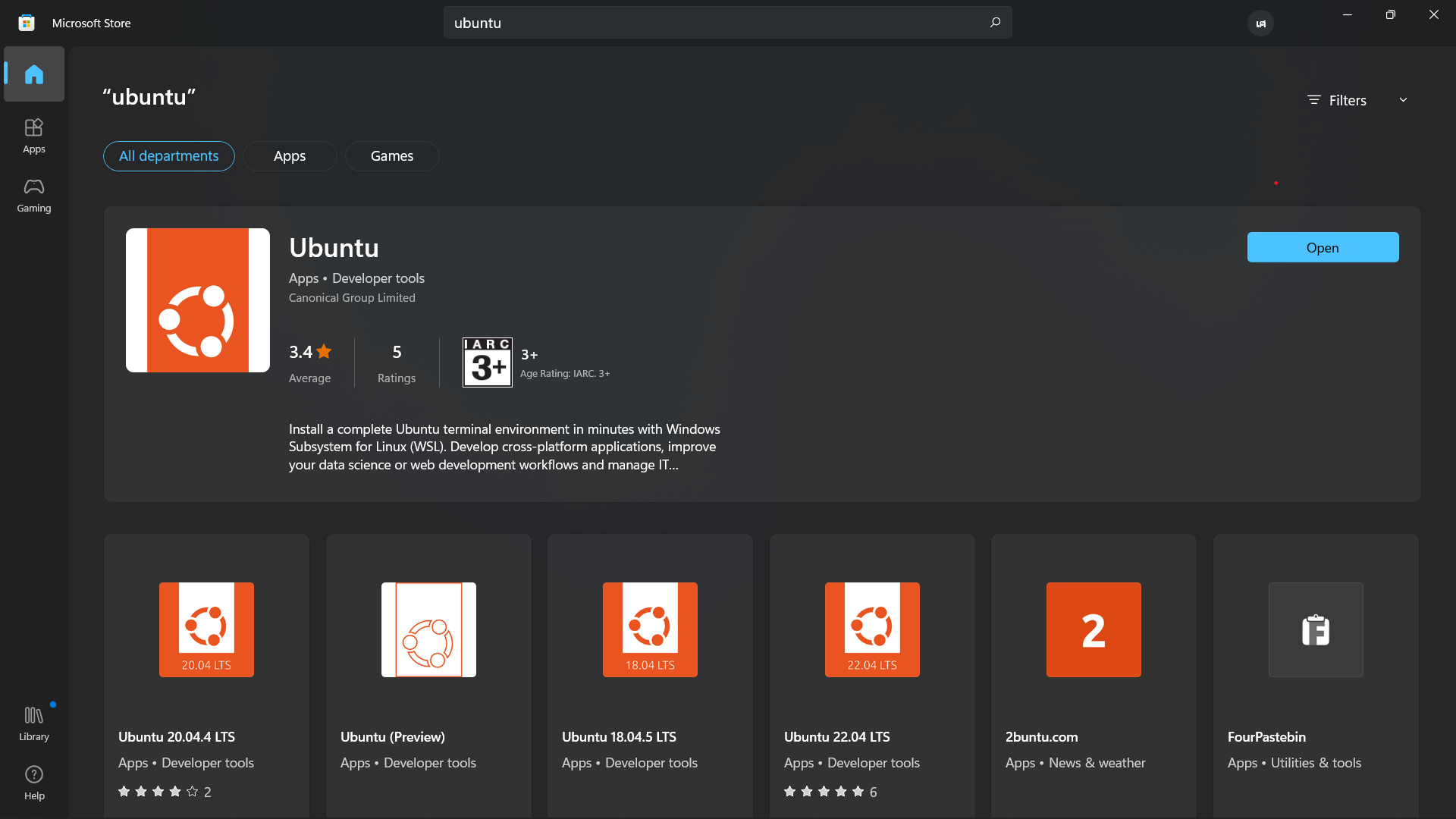
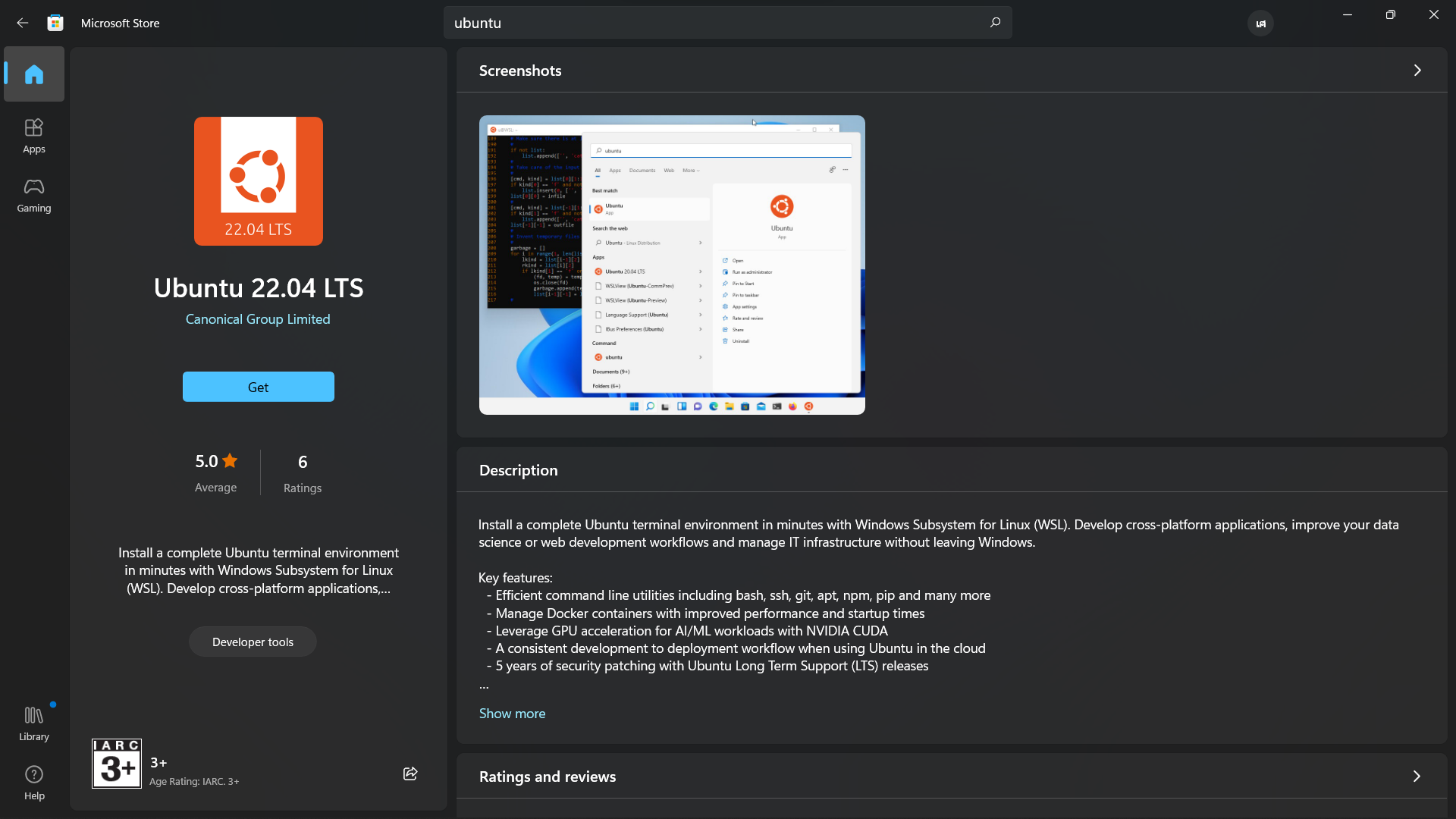
I opened it up and created a default UNIX user account
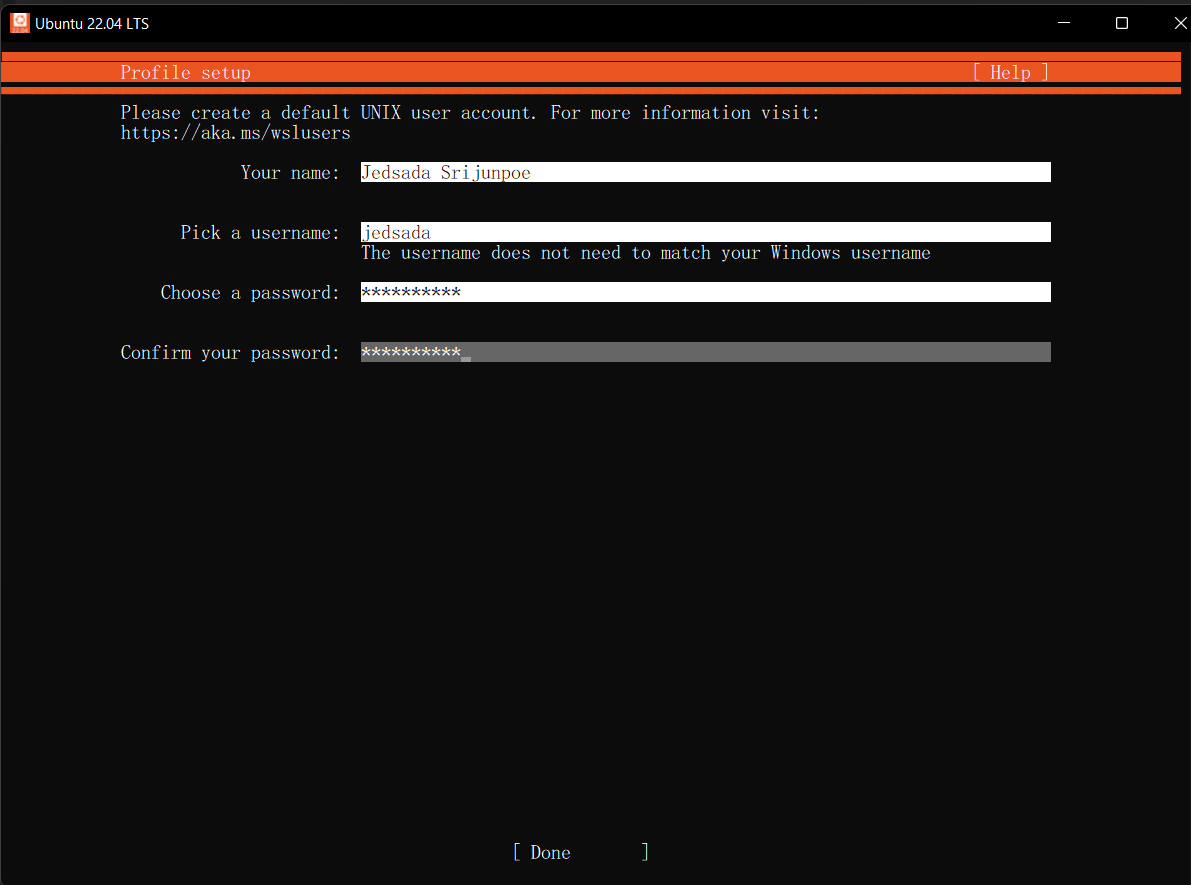
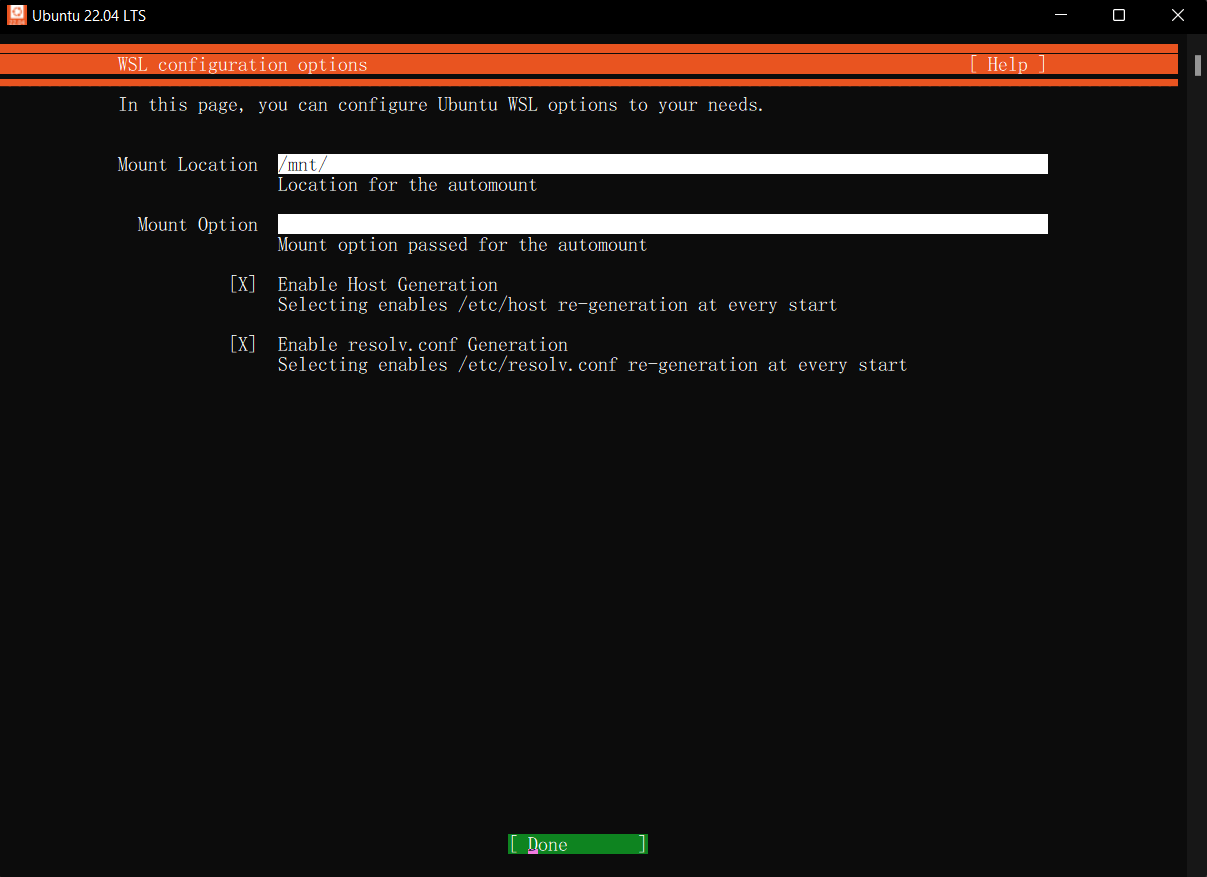
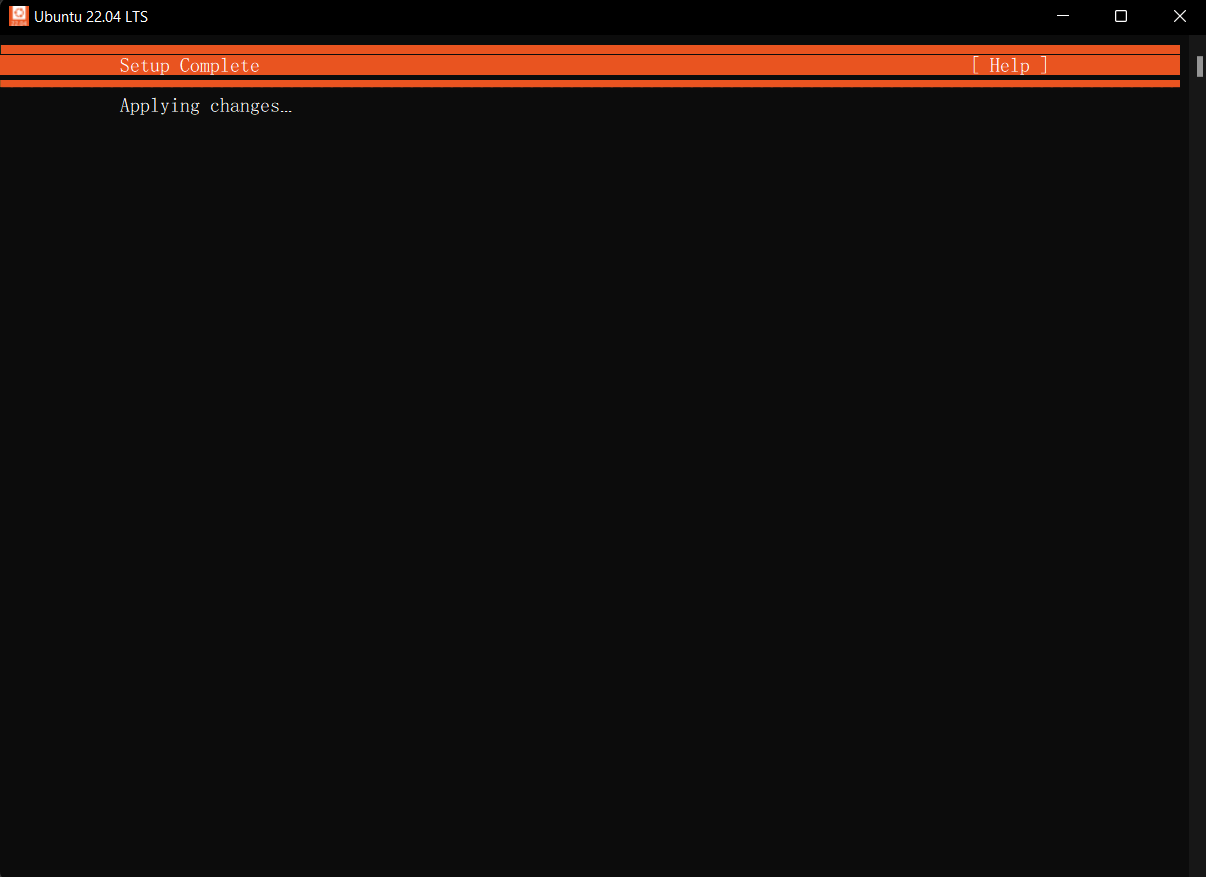
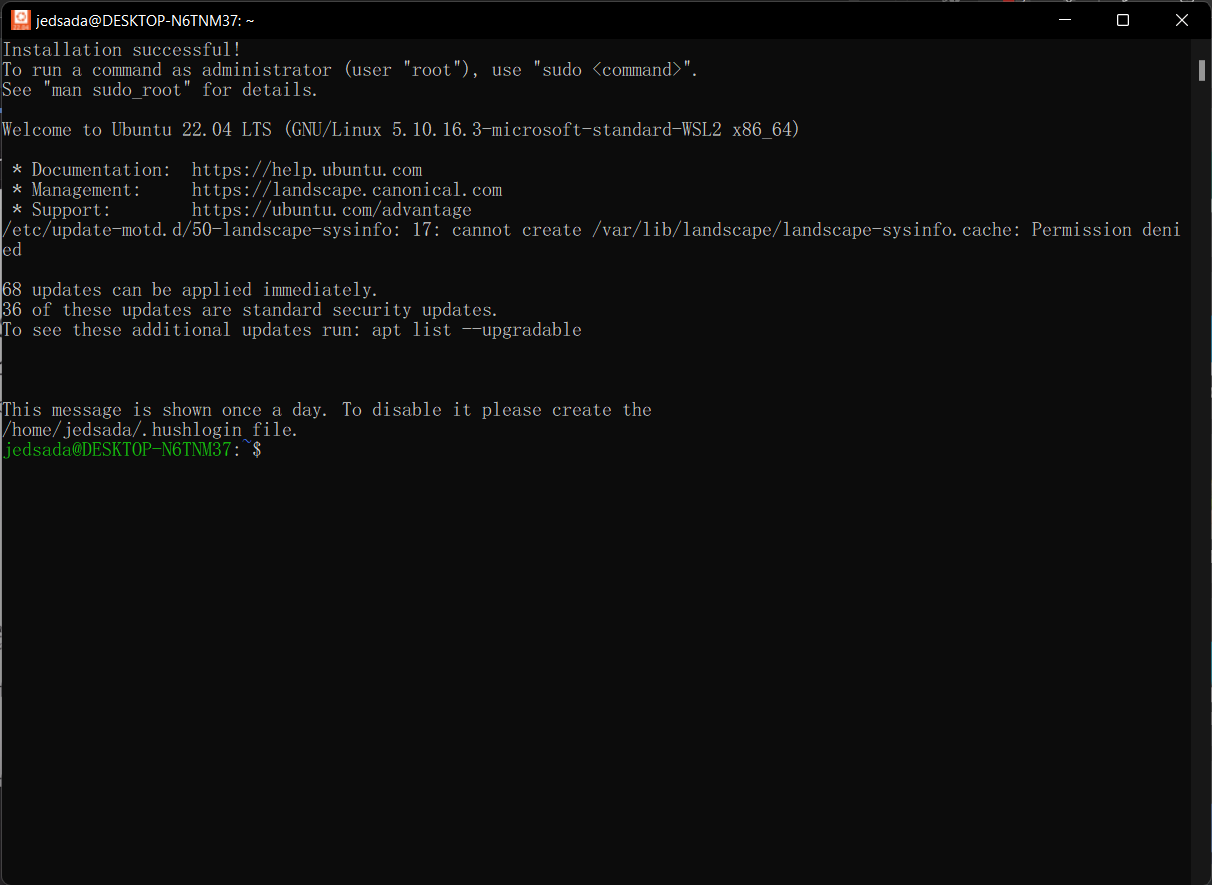
3. Try using Basic WSL2 Commands
I followed this Basic commands for WSL documentation
3.1. Check which version of WSL you are running
wsl -l -v
This command will list your installed Linux distributions
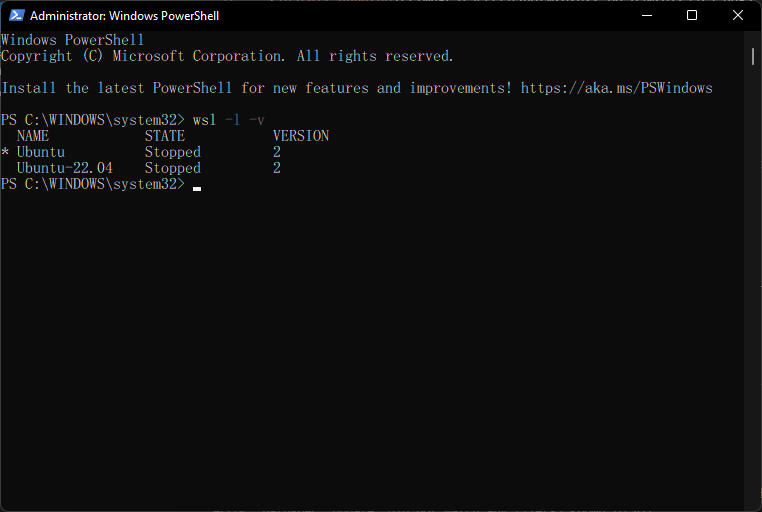
- The first Ubuntu is the default Linux distributions that
will install for you when you runwsl --install- The second Ubuntu-22.04 is the Ubuntu that I downloaded from Microsoft Store
Next, I selected Ubuntu-22.04 with this command
wsl -s "Ubuntu-22.04"

To terminate the specified distribution use this command
wsl --t "Ubuntu-22.04"

3.2. Install a specific Linux distribution
This command will show you a list of the Linux distributions to install
wsl -l -o

To install a specific Linux distribution use this command
wsl --install -d <Distro>
I installed Debian



3.3. Unregister or uninstall a Linux distribution
To unregister and uninstall a WSL distribution:
wsl --unregister <DistributionName>
I uninstalled Debian

4. Try using Basic Ubuntu Commands


5. Run Linux GUI apps on the Windows Subsystem for Linux
I followed this documentations
Support for GUI apps on WSL does not provide a full desktop experience. It relies on Windows desktop, so installing desktop-focused tools or apps may not be supported.
5.1. Prerequisites
- You will need to be on Windows 11 Build 22000 or later to access this feature.
- Installed driver for vGPU
If you already have WSL installed on your machine, you can update to the latest version that includes Linux GUI support by running the update command from an elevated command prompt.
wsl --update
You will need to restart WSL for the update to take effect.
wsl --shutdown
5.2. Run Linux GUI apps
5.2.1. Update the packages in your distribution
$ sudo apt update
5.2.2. Install Gedit
Gedit is the default text editor of the GNOME desktop environment.
$ sudo apt install gedit -y

Run gedit to open Untitled Document text


You can run gedit <file name> to open or create text file



Open existing file


5.2.3. Install Nautilus
Nautilus, also known as GNOME Files, is the file manager for the GNOME desktop. (Similar to Windows File Explorer).
$ sudo apt install nautilus -y

To launch, enter: nautilus

